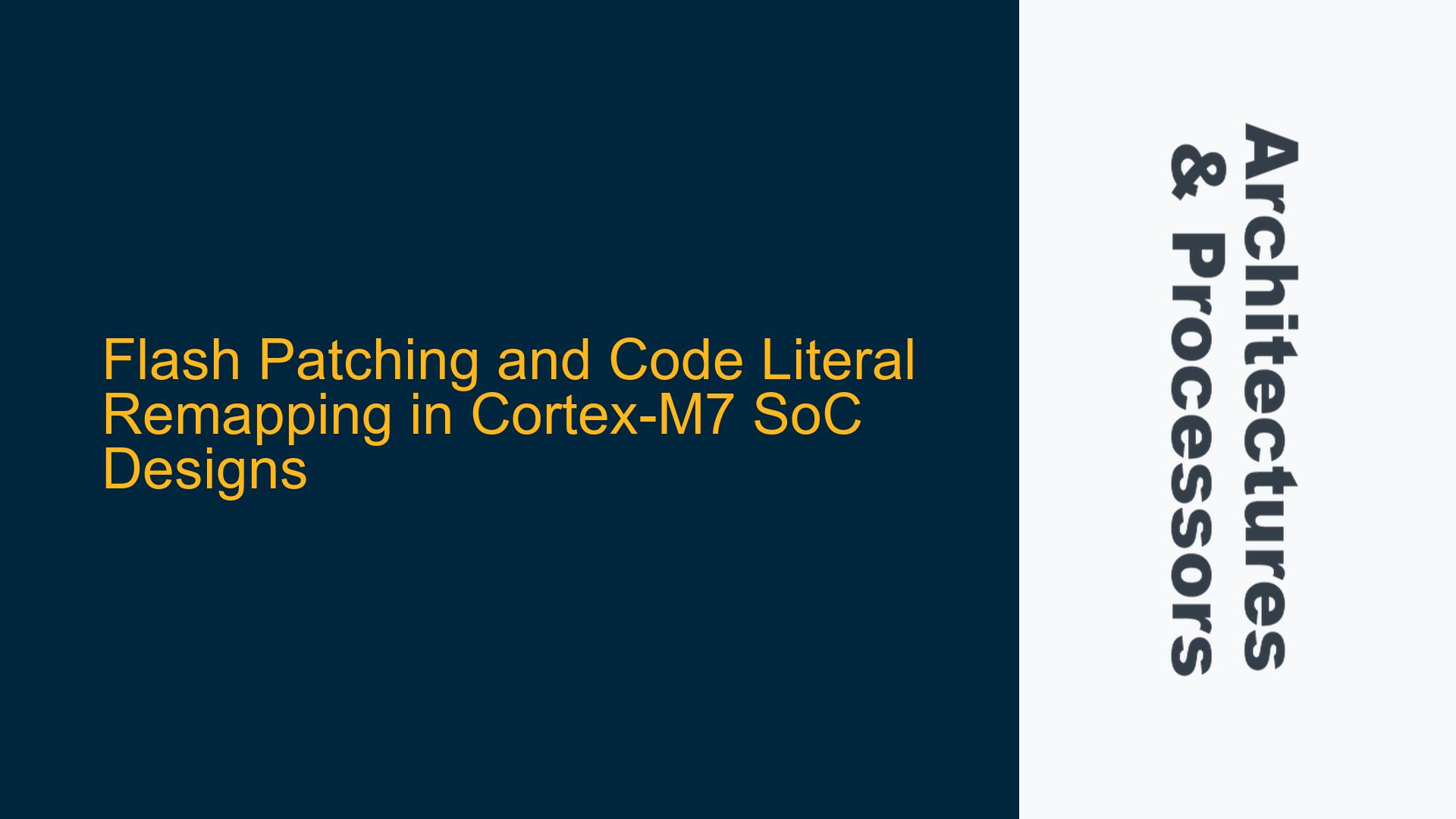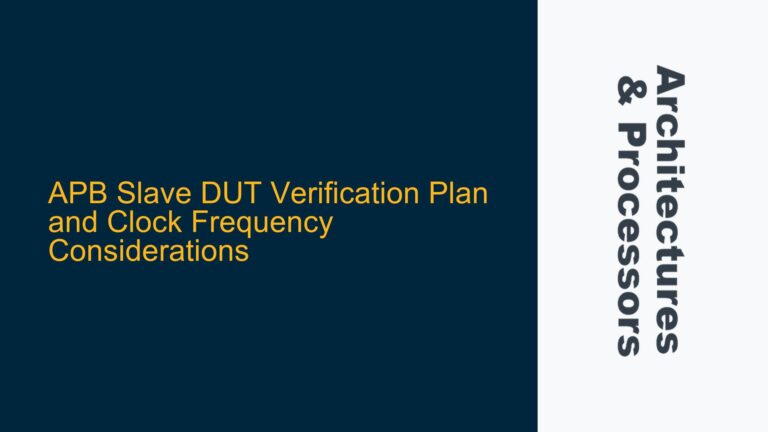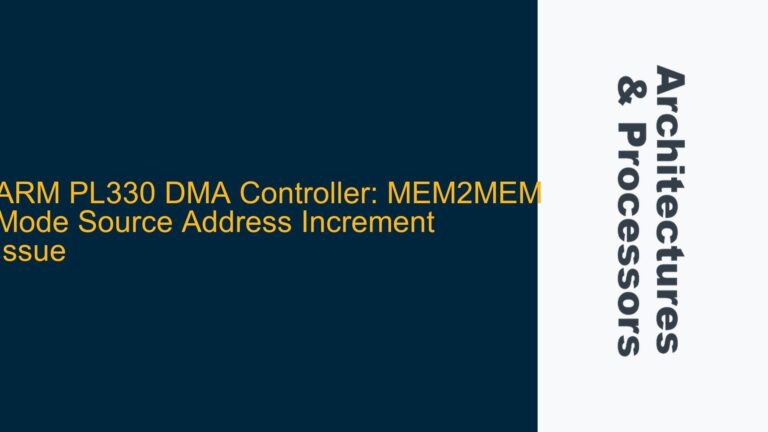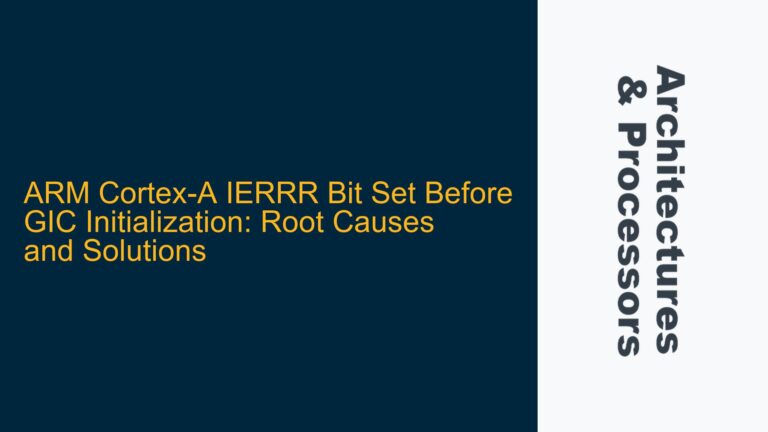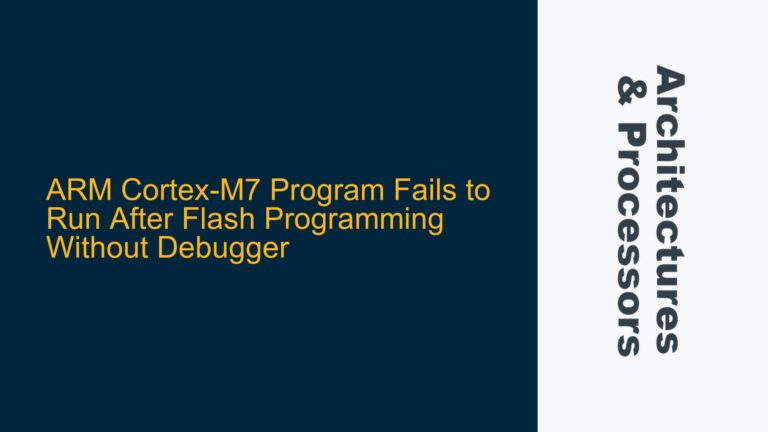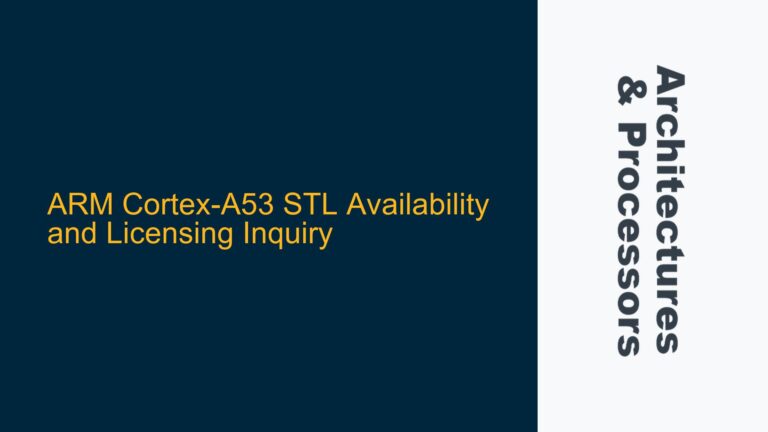Flash Patching and Code Literal Remapping Requirements in Cortex-M7
The Cortex-M7 microcontroller, a high-performance embedded processor, is widely used in System-on-Chip (SoC) designs for applications requiring real-time processing and efficient memory management. One critical requirement in such designs is the ability to remap code literals from Code Flash to RAM, a process often referred to as flash patching. This functionality is essential for scenarios where code optimization, debugging, or runtime modifications are necessary. However, the Cortex-M7 architecture does not natively support the Flash Patch and Breakpoint (FPB) unit’s remapping functionality as described in the ARMv7 Architecture Reference Manual. This limitation necessitates a custom implementation to achieve the desired remapping.
In a typical Cortex-M7 SoC design, the AXI bus is connected to the Code Flash memory, while the AHBP (AHB Peripheral) bus is connected to an AHB interconnect, which interfaces with peripherals such as RAM. Additionally, the Cortex-M7 core is equipped with Data Tightly Coupled Memory (D-TCM), which provides low-latency access to frequently used data. The challenge lies in implementing a mechanism to remap code literals from the Code Flash to a suitable RAM, such as the AHB-connected RAM or the D-TCM, without native FPB support.
The primary questions to address are:
- How can code literal remapping be implemented in the absence of FPB functionality?
- Which RAM type (AHB-connected RAM or D-TCM) is suitable for remapping, and can Trace buffers (CoreSight components) be used?
- Where should the remapping logic be implemented—within the Cortex-M7 core, at the bus interconnect, or elsewhere?
Absence of FPB Functionality and Memory Mapping Constraints
The Cortex-M7 architecture does not implement the FP_REMAP functionality of the FPB unit, which is typically used for remapping code literals from Flash to RAM. This absence creates a gap in the memory management capabilities of the Cortex-M7, particularly for applications requiring dynamic code modifications or optimizations. The FPB unit, as described in the ARMv7 Architecture Reference Manual, allows for the remapping of specific Flash memory addresses to alternative locations, such as RAM, enabling runtime patching and debugging. Without this functionality, developers must rely on custom solutions to achieve similar results.
The memory architecture of the Cortex-M7 further complicates the implementation of code literal remapping. The Cortex-M7 core interfaces with multiple memory types, including Code Flash (connected via AXI), AHB-connected RAM, and D-TCM. Each memory type has distinct characteristics in terms of latency, bandwidth, and access permissions. For example, D-TCM offers low-latency access but is limited in size, making it suitable for storing frequently accessed data but potentially insufficient for large-scale code remapping. On the other hand, AHB-connected RAM provides larger storage capacity but may introduce higher latency due to the AHB interconnect.
Another consideration is the Trace buffer, a CoreSight component used for debugging and tracing program execution. While Trace buffers are primarily designed for capturing execution traces, they could theoretically be repurposed for code remapping. However, this approach is unconventional and may introduce additional complexity, as Trace buffers are not typically designed for direct code execution.
The absence of FPB functionality and the constraints imposed by the Cortex-M7 memory architecture necessitate a careful evaluation of potential solutions. The remapping logic must account for the specific characteristics of each memory type, ensuring that the chosen solution does not introduce performance bottlenecks or violate memory access permissions.
Implementing Custom Remapping Logic at the Bus Interconnect Level
Given the absence of FPB functionality in the Cortex-M7, the most viable approach to implementing code literal remapping is to design custom logic at the bus interconnect level. This solution involves intercepting memory accesses to the Code Flash and redirecting them to a designated RAM, such as the AHB-connected RAM or D-TCM. The remapping logic can be implemented as part of the AXI-to-AHB bridge or as a separate module within the bus fabric.
The first step in implementing custom remapping logic is to define the address ranges that require remapping. This can be achieved by configuring a set of address comparators within the remapping module. When a memory access falls within the defined address range, the remapping logic redirects the access to the corresponding location in the target RAM. For example, if a code literal located at address 0x0800_0000 in Code Flash needs to be remapped to address 0x2000_0000 in AHB-connected RAM, the remapping logic would detect accesses to 0x0800_0000 and redirect them to 0x2000_0000.
The choice of RAM for remapping depends on the specific requirements of the application. AHB-connected RAM is suitable for scenarios requiring larger storage capacity, while D-TCM is ideal for low-latency access to frequently used code literals. In some cases, a combination of both memory types may be used, with critical code literals remapped to D-TCM and less frequently accessed literals remapped to AHB-connected RAM.
The remapping logic must also handle synchronization and coherency issues that may arise from redirecting memory accesses. For example, if the remapped code literals are modified at runtime, the changes must be propagated to the target RAM to ensure consistency. This can be achieved by implementing a write-through mechanism, where modifications to the remapped addresses are immediately written to both the original Flash location and the target RAM.
In addition to address redirection, the remapping logic should include error handling mechanisms to detect and respond to invalid memory accesses. For example, if a remapped address falls outside the defined range, the logic should generate an error signal or trigger an exception to prevent unintended behavior.
The implementation of custom remapping logic at the bus interconnect level provides a flexible and scalable solution for code literal remapping in Cortex-M7 SoC designs. By carefully designing the remapping module and selecting the appropriate RAM type, developers can achieve the desired functionality without relying on native FPB support. This approach also allows for future enhancements, such as dynamic remapping or support for additional memory types, making it a robust solution for a wide range of applications.
